Now that the year is nearing its end, I have the chance to reflect on what I learned about UX design this year, and want to share some highlights from a conference I attended last month.
Expanding Horizons of What we think of as UX Design
In November, I attended the CanUX in Ottawa, Canada’s largest annual UX conference. I was surprised by the topics of some talks, and also amazed by what I learned. For instance, there was a highly interesting excursion into laser printing product innovations. Lining Yao presented her recent work conducted by Morphing Matter Lab at Carnegie Mellon’s Human-Computer Interaction Institute. They are working on chairs that are printed flat and morph into a 3D model once they get in contact with heat.
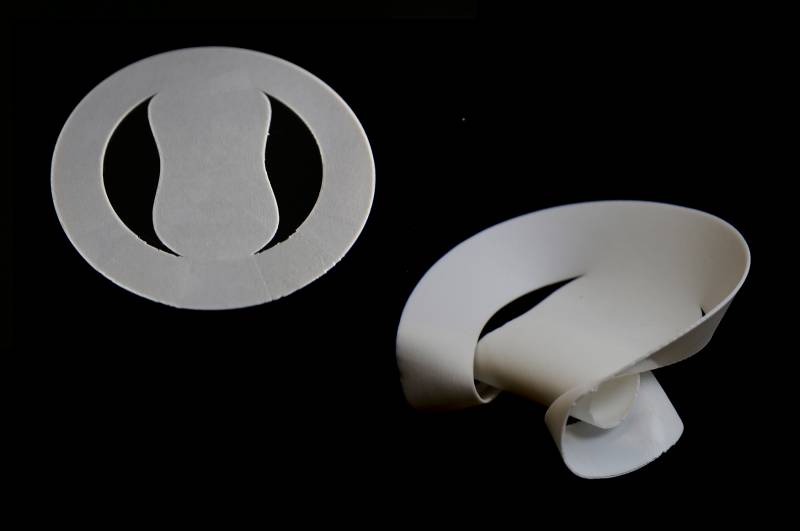
This innovation is surprisingly ecological, because they use eco-friendly material and would save transportation costs in the future. Imagine how many more chairs you can transport in a truck if they are flat as opposed to already assembled. This talk was really unexpected, but powerful. It made me realize that designing for a physical medium in 2019 can bring together programmability and responsiveness which I thought used to be reserved for digital.
Accessibility and Inclusion
A clear theme of the conference was designing for accessibility and inclusion. It has already been an important topic for us at Evolving Web for the last couple of years as it’s obviously more than a trend. Bryce Johnson, one of the inventors of the Xbox Adaptive Controller, walked us through Microsoft’s Inclusive Design principles and how they were used to create a controller for gamers with reduced mobility. This showed me how accessibility can go far beyond web design.
Emma Howell took us on a journey of designing an inclusive government drug information service for young adults called “Talk to FRANK”. She explained how accessibility refers specifically to the impact of designs on people that have disabilities. They can be permanent, temporary or situational as this wonderful sketchnote by @evalottchen illustrates:

Inclusivity on the other hand, means designing so that everyone can use a product or interface regardless of age, ability, or situation. Emma brought attention to how improving the performance of the “Talk to FRANK”website increased the number of page views. After all, inclusivity means not excluding any group of users – and as part of that, we don’t want to exclude those with reduced internet speed.
Inclusivity and accessibility often refer to access to information. But sometimes, websites can or should offer much more than information! Speaker Cyd Harrell, experienced in UX research and service design for governments, talked about UX for institutions. She pointed out what seems obvious, but is not always the case yet:
“Government websites are usually about the government.
They need to be the government, doing the people’s business online.”
Cultural influences – and influencing culture
Another theme that I recognized at the conference was culture: cultural backgrounds and organizational cultures. Coming from a different continent myself, this topic has interested me for some time.
A day before the first conference day, I participated in the workshop “Leading UX: Influencing Culture & Growing Teams” with Kim Goodwin. She shared a ton of helpful insights about organizational culture. I learned how organizations have different values and therefore act differently which can be very important for getting to design decisions. The different organizational types we discussed were: adhocracy, hierarchy, clan, market. They are based on a framework that provides a means of understanding and changing organizational culture in order to make organizations more effective.
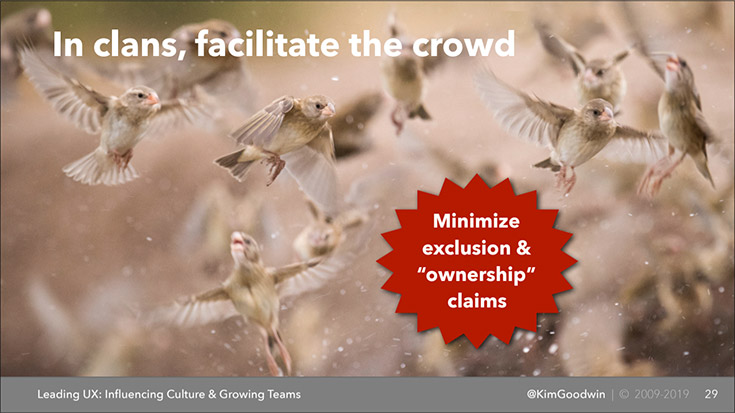
Farai Madzima from Shopify talked about “Cultural bias in design” and how he got fired from a job as he explained “because my African culture made me suck at my job”. His presentation was not only very entertaining, but also made me think about this topic a lot.
He broke down how people from different cultures often have very contrasting ways of communication. The worst-case example of such a misunderstanding that he mentioned led to a plane-crash which makes getting fired look insignificant. But, more relevant for our daily work in web design and development, these cultural clashes can sometimes actually make a difference when giving feedback or making a decision. Some cultures tend to decide very consensually, others more top-down.
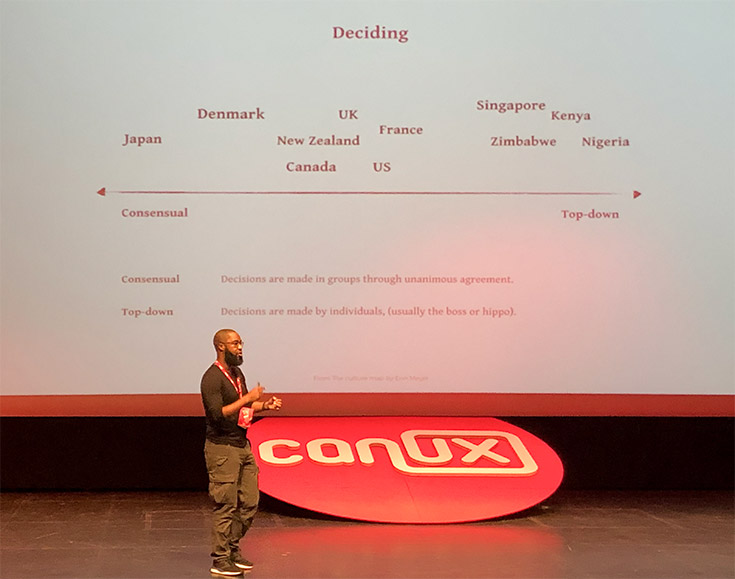
Understanding these differences, that are sometimes subtleties, sometimes clashes, is the first step of “sucking less at our jobs”. If you then combine the culture you’re from with what you’ve learned in the new environment, you will be unstoppable!
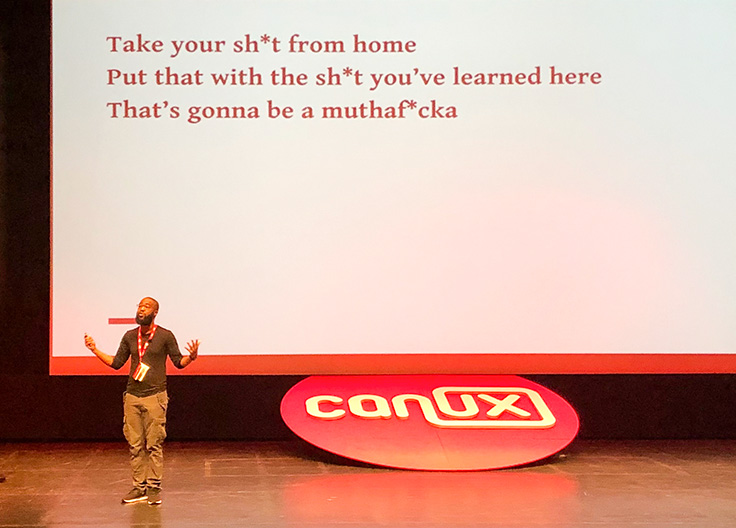
Design Collaboration
A clear trend at Evolving Web in 2019 that we’re taking forward to 2020 is growing our design team. From one freelance designer in 2017 (me) to four designers in the beginning of 2020.
The UX Design Collective published their “State of UX in 2020” report and recognizes a trend away from UX-team-of-one positions and towards more collaboration between different disciplines.
“The old stereotype of the "rockstar designer" is (thankfully) going away. As digital teams grow and projects become more complex, designers are being valued by collaboration and team enablement rather than only individual tasks.”
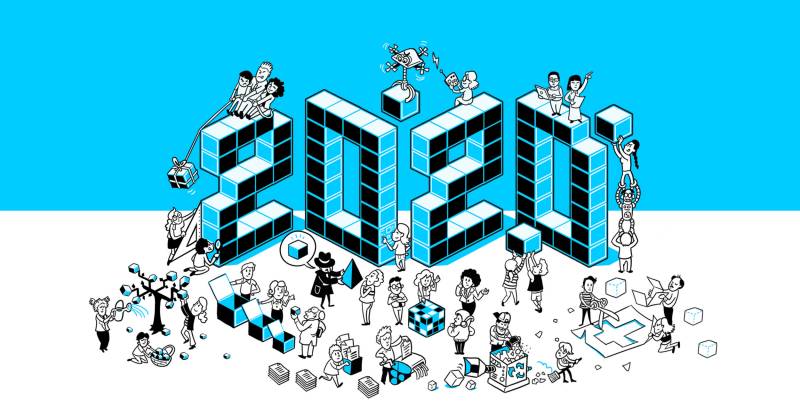
UX is a fast-growing discipline, and we need to embrace different skill sets and learn from each other as much as possible.
“In 2020, rather than dwelling on questions such as whether designers should code, we should be welcoming new and much-needed skills to our fast-growing field.”
If you want to learn more about Evolving Web and our culture, feel free to visit our careers pages!

